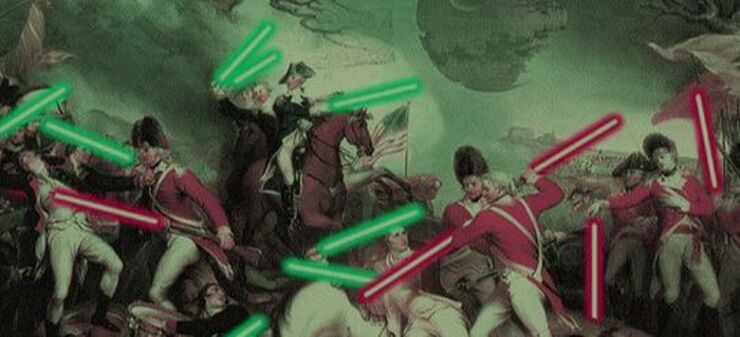|
When you do research, you have to gather information and evidence from a variety of sources. Primary sources provide basic information and first-hand evidence. Examples include interview transcripts, statistical data, and works of art. A primary source gives you direct access to the subject of your research. Secondary sources provide second-hand information and commentary from other researchers. Examples include journal articles, reviews, and academic books. A secondary source describes, interprets, or synthesizes primary sources. Primary sources are more credible as evidence, but good research uses both primary and secondary sources.
PRIMARY
Primary Sources are immediate, first-hand accounts of a topic from people who directly connected with it. Primary sources that describe original research, clinical trials, for example, will be published as peer-reviewed journal articles. But this does not mean that all journal articles are primary sources. Primary articles will describe one research project or study. Primary sources can include:
SECONDARY
Secondary sources are best identified by their use of primary articles as source material. Examples of secondary sources include review articles, systematic reviews, and meta-analyses. Other sources, such as practice guidelines and expert topic summaries, are usually considered secondary (although some argue that they are tertiary since they reference primary and secondary sources). Secondary sources, especially systematic reviews, are written under specific guidelines and protocols and often include methods sections and abstracts. So the presence of these sections is not necessarily an indication of a primary source. Many secondary sources published in peer-reviewed journals will also include an abstract. However, many are not structured abstracts and, if they are, often contain different section headers. Secondary sources can include:
HOW TO TELL THE DIFFERENCE
There are some simple questions you can ask yourself:
WHEN SECONDARY CAN BECOME PRIMARY
Often secondary and primary sources are relative concepts. Typical secondary sources may be primary sources depending on the research topic. Intellectual history topics. For example, although scholarly journal articles are usually considered secondary sources, if one's topic is the history of human rights, then journal articles on human rights will be primary sources in this instance. Similarly, research on the thinking of a scholar will include her published journal articles as primary sources. Historical topics. Magazine articles are secondary sources, but for someone researching judicial punishment in the 1920s, magazines from that period are primary sources. Indeed, any older publication, such as those before the 20th century, is very often automatically considered a primary source. Newspapers may be either primary or secondary. Most articles in newspapers are secondary, but reporters may be considered as witnesses to an event. Any topic on the media coverage of an event or phenomenon would treat newspapers as a primary source. There are so many articles and types of newspapers that can often be considered primary or secondary.
SO WHICH IS BETTER?
Most research uses both primary and secondary sources. They complement each other to help you build a convincing argument. Primary sources are more credible as evidence, but secondary sources show how your work relates to existing research. Primary sources are the foundation of original research. They allow you to make discoveries, provide credible evidence for your arguments and give authoritative information about your topic. If you don't use any primary sources, your research may be considered unoriginal or unreliable. Secondary sources are good for gaining a complete overview of your topic and understanding how other researchers have approached it. They often synthesize many primary sources that would be difficult and time-consuming to gather by yourself. They allow you to gain background information on the topic, support or contrast your arguments with other researchers' ideas and collect information from primary sources that you can't access directly. When you conduct a literature review, you can consult secondary sources to gain a thorough overview of your topic. If you want to mention a paper or study that you find cited in a secondary source, seek out the source and cite it directly.
CITATION
We live in a post-citation world. Ultimately, much of academia is bogged down with various citation styles, and professors look to markdown assignments based on knowledge of APA or MLA versus the actual content being covered. Usually, a hyperlink can suffice. That being said, a citation is required for this assignment, but I do not hold a rigid system. I prefer CHICAGO-STYLE citation if given the option, as it is the standard in the historical community. But you choose any format you feel comfortable with (APA, MLA, Chicago, etc.), or I will accept even a hyperlink. Keep in mind, if I need to be able to find your sources, you'll be marked down if I cannot. Need help making a citation? KnightCite from Calvin University has an awesome free service to make the citation for you! RESOURCES Primary Sources: A Research Guide Richmond Campus Library: Finding Primary Research Articles PRIMARY VS SECONDARY LITERATURE IN THE BIOMEDICAL SCIENCES Primary and secondary sources CITING & SOURCES Primary vs. Secondary Sources Wanting to learn more? Check out these links for other portions of the class:
2 Comments
4/9/2022 11:20:17 pm
I was thinking about how to fix skin break out regularly additionally, <a href="https://www.outclassjackets.com/ryan-reynolds-the-adam-project-jacket">Ryan reynolds the adam project jacket</a> noticed your site by google, gathered huge loads of helpful information as of now i'm a piece clear.
Reply
4/25/2022 11:56:29 pm
Fox Fur Collar Jacket , Shirt Style Jacket , Double Collar Jacket , Double Breasted Jacket , Distressed Jackets , Denim Jackets , Leather Jackets , Fleece Jackets , Sherpa Jackets , Trench Coat , Gothic Coats , Fur Coat , Faux Fur Coat , Velvet Coat , Movies Jackets , Tv Series Jackets , Cartoon Jackets , Game Jackets , Songs Jackets , Leather Blazer , Biker Jackets , Bomber Jackets , Hoodie Jackets , Stylish Sleeves Jackets , Pull Over Jackets , Zipper Jacket , Vintage Jackets , Tracksuits And Wool Coats For Men & Women All's Are In Outclassjackets.com If You Want To Buy Any Product To Click <a href="https://www.outclassjackets.com/women-angel-wings-blue-denim-jacket">Angel Wings Jackets</a>.
Reply
Leave a Reply. |
AuthorRyan Lancaster wears many hats. Dive into his website to learn about history, sports, and more! Archives
April 2024
Categories |






 RSS Feed
RSS Feed